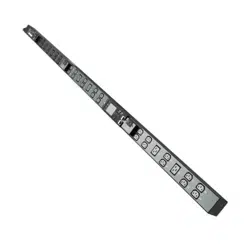Loading ...
Loading ...
Loading ...

34
Self-Calibrating Latched Relays
(Switched PDUs Only)
The PDU uses latched relays to control the power supplied to the outlets.
When a switch or a relay is used to control a power delivery to a load,
attention should be paid to the electric arc phenomena. If the power is
higher than a certain level when the relay is turned “off” to disconnect the
power from the load, an arc is created that causes the current to continue
flowing between the relay’s opened contacts (and therefore through the
load), until two contacts are far enough or until the power is reduced
below a certain level. This arc may deform the relay’s contacts, which
may increase considerably the closed contacts resistance, or may even
fuse the two contacts together, preventing them to open. To deal with this
phenomena, an effort is attempted to switch the power to the load when
the power is in the lowest value occurs. The PDU is designed to connect
or disconnect the power when it crosses the zero level (or very close to
it). Since each relay has its own response time between the time a power
is applied to its controlling solenoid, by the time the contacts are closed
or open, a calibration process is needed to be performed to determine
the exact “on” and “off” response times of each relay. This calibration is
typically performed at the factory, where the values are stored and used
when switching the power to the outlets during the PDU’s lifetime. Since
these times are affected by environment conditions and aging, the values
achieved and stored at the factory may no longer remain accurate when
the PDU’s operational environment is different from those used in the
factory for calibration. To overcome these affecting factors, the PDU utilizes
an ongoing self-calibrating mechanism. This mechanism measures and
stores an updated “on” and “off” response time for each relay every time
it is switched “on” or “off”. These updated values suit the real environment
conditions in which the PDU is operating, as well as the change caused by
each relay aging. The value that will be used for the next relay switch will
rely on the updated and history stored values.
Note: This feature is enabled by default and can only be Disabled or Re-Enabled via
PowerAlert® Device Manager (PADM) network management software.
Loading ...
Loading ...
Loading ...
